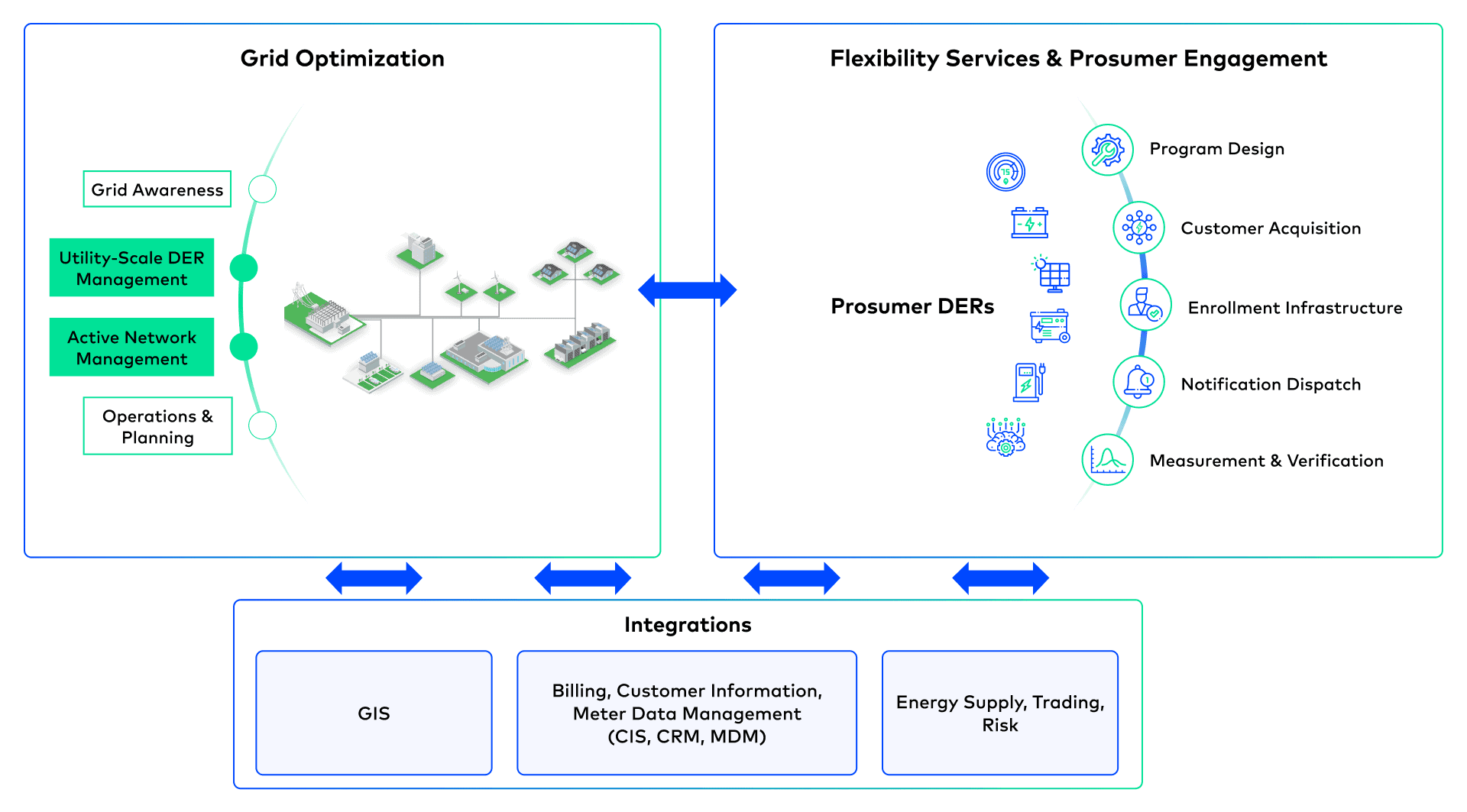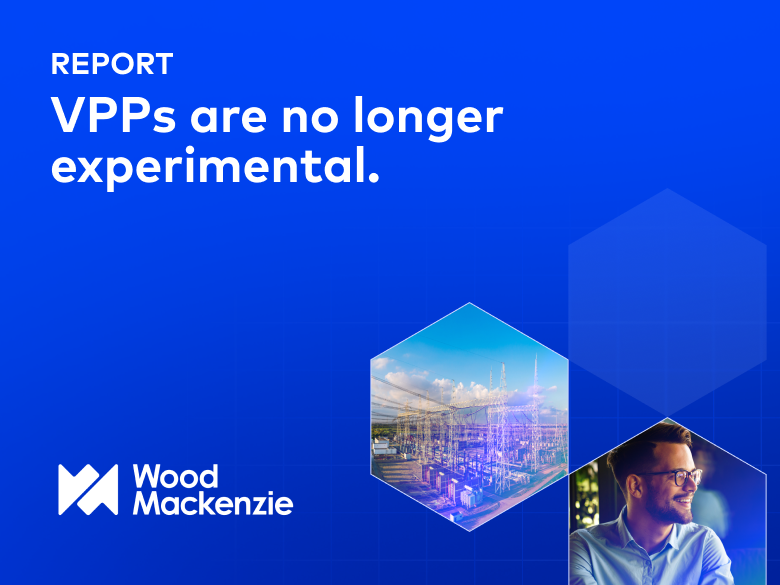The energy industry is notorious for acronyms and buzzwords. Many come, many go, yet some stick. Though terms such as microgrids and virtual power plants (VPPs) have been bandied about for more than a decade, the concept of distributed energy resource management systems (DERMS) is more recent. DERMS is emerging as the more comprehensive and inclusive term. Increasingly, it is the umbrella under which both microgrids and VPPs fall. After all, as I have noted previously, all three terms are linked to the growth in reliance upon distributed energy resources (DERs).
Some frequently cited versions of DERMS in use today fall short, DERMS is not synonymous with Advanced Distribution Management Systems (ADMS). Nor is it strictly a DER-focused module within ADMS. And what’s more, not all ADMS offerings are created equal.
In this blog, I make the case for a more comprehensive definition of DERMS. Specifically, the combination of a grid optimization platform with a flexibility management solution provides a more complete DERMS solution connecting the utility control room to the grid edge. Maintaining grid stability and balancing supply and demand from both DERs and grid-scale assets have become increasingly complex. Today’s state-of-the-art DERMS can bridge the gap between a network-model-based, grid-aware system that has visibility into stability challenges and the aggregated DER flexibility that can resolve threats to frequency and voltage says and spikes to ensure a resilient and optimized energy grid.
Bridging the Gap
DER assets continue to proliferate, propelled by escalating demands for electrification as governments and investors alike grapple with climate change and the impact of extreme weather events, such as those that have struck California and Texas. The right DERMS solutions can enable the integration of not only renewables like solar and wind, but battery energy storage and demand response (DR) options such as smart thermostats. The latter has enabled utilities to harness excess energy during high solar or wind production periods for subsequent release into the grid during periods of peak demand. This holistic perspective—encompassing both behind-the-meter and front-of-the-meter assets—reflects the intricate orchestration required to maintain grid stability.
While FERC Order 2222 is a step forward in connecting retail and wholesale markets, we have a long way to go to truly feature full market integration to streamline widespread adoption of VPPs. This policy and technology gap is being filled by various variants and vintages of so-called DERMS. Here is a proposed list of what a state-of-the-art DERMS deployment includes:
- A comprehensive industry-leading grid optimization platform
- A powerful flexibility management platform in order to connect and orchestrate all asset types in a distribution network
- The ability to achieve end-to-end DER program management
- This next-level DERMS combines the network management, load modeling, rules-based approach of an ADMS with customer recruitment, enrollment, onboarding, dispatch, M&V, and settlements offered by a flexibility management platform to deliver full value to the prosumer as well as the larger grid network
Right There in the Name: (DER)MS
Perhaps the best way to understand DERMS is to describe the new end-to-end Grid-to-Prosumer DERMS solution offered by Schneider Electric and Uplight. These two companies came to DERMS from opposite sides of the ledger.
The evolution from ADMS to DERMS, both historically on-premise solutions, can be seen as a natural evolution of the critical role grid operators play in maintaining overall network reliability, Grid operators come in many forms. They can be a utility, an independent system operator (ISO) managing the transmission network, or a distribution system operator (DSO), an entity that is nascent in the U.S., but exists today in Europe and select global markets such as Australia.
An example of a DERMS that evolved from an ADMS is Schneider Electric’s EcoStruxure DERMS. The uses cases for this EcoStruxure DERMS platform are classic grid optimization needs, as shown in the graphic.

The Flex platform is a cloud-native system that supports DR, VPP, and microgrid use cases. In the context of DERMS, Uplight’s focus is the creation of DER-based flexibility.
The combined DERMS solution leverages the grid management focus of Schneider Electric’s EcoStruxure platform with the flexibility management capabilities of each Flex application. This integrated solution offers real-time visibility and control across all behind-the-meter and utility-scale assets including thermostats, water heaters, building controls, gensets, energy storage, solar PV, wind, and EV supply equipment.
The combined DERMS solution can serve as a standalone solution or be embedded with an existing ADMS. Embedding it with ADMS allows complete visualization of DER in the distribution network in geographic, schematic, and substation internal views. It can also be deployed as stand-alone, or cloud or hybrid on-premise (EcoStruxure) and cloud (Flex).
Evolving to Full Potential
The term DERMS occupies a pivotal role in the energy transition. The true potential of DERMS extends beyond mere dispatching. It engages in active network management, reactive power integration, load forecasting, and hosting capacity analysis, culminating in a comprehensive approach to grid management and grid-to-prosumer DER optimization. For example, congestion management is a top priority and achieved through techniques such as dynamic site limits.
Now is the time for the integration of DERMS within existing distribution network infrastructures. Better to prepare for a future DER-heavy landscape than to react later and suffer the consequences. By converging both ends of the possible DERMS spectrum, utilities and other grid operators can now access a holistic solution for grid balancing and orchestration, thereby transcending the limitations posed by the traditional siloed platforms of the past.




